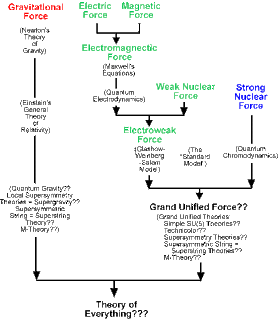Humans learned how to dispassionately and understandably observe and explain the workings of nature. It might be mentioned that while some so-called scientific theories were assigned the title ‘‘law’’ many years ago, many more modern theories, such as the theory of relativity, could just as well be referred to as the ‘‘law of relativity’’ today.
Accepted and established theories are similar to accepted and established laws as far as accuracy is concerned. In other words, a scientific law is resulting from a theory that has been proven and frequently verified by the application of mathematics and is unfailing in predicting specific effects.
Scientific physical laws are statements of fact that explain nature and how it works and are not merely applicable to the nonliving things in the field of physics – matter and energy-. Scientific laws also apply to all living things in the field of biology -plants and Animals-, and all areas of nature. Physical laws do not apply to things that are not natural, for example, the spiritual, philosophical, and parapsychological. Physical laws are generalized factual principles that describe how things behave in nature under a variety of conditions.
Now , Where did these physical laws come from?
The answer is clear— from within the universe itself. We live in a controlled universe, made understandable by applying the concept of ‘‘rules’’ and using intelligent powers of reasoning, logic, and critical thinking. Scientific physical laws describe how things work and to some degree what they are in reality, but not always why they work as they do – e.g., gravity—we really do not know what gravity is or why it works as it does, but it is universal, predictable, and can be described mathematically-.
Scientific laws are consistent, long lasting, universal, and based on reason. In other words, a phenomenon, event, or action that occurs and behaves in the same manner under the same conditions, and is thus predictable, can be stated as a scientific law. These are sometimes referred to as ‘‘fundamental laws,’’ ‘‘universal laws,’’ ‘‘basic laws of science,’’ or just ‘‘physical’’ or ‘‘scientific’’ laws.
At least 5 characteristics apply to all scientific laws:
1. They can be expressed mathematically.
2. Physical laws are not always precise – as is mathematics). Scientific laws may need future ‘‘adjustments’’ as more knowledge is gained concerning the natural phenomenon as expressed by the law – but revisions are not made often nor extensive-
3. The natural systems may be complex and contain many ‘‘pieces,’’ but the law describing the phenomenon always turns out to be uncomplicated. The universal ‘‘theory of everything’’ (TOE) or the ‘‘grand unification theory’’ (GUT) is expected to be an extremely complex composite of matter/energy. Even so, scientists predict that when found, the TOE or GUT will be a very simple mathematical expression.
4. Most essential, scientific theories are universal.-Any well-established physical law that applies on Earth also applies all the way through the universe – .
5. By using statistical probabilities, scientific theories can be used to predict future natural events in the real world.

